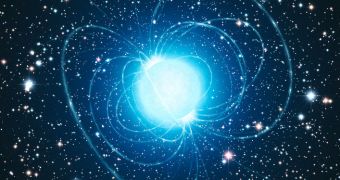Scientists are currently puzzled at a recent discovery they made, when they found out that a rare type of neutron star, called a magnetar, was produced from a massive star about 40 times heavier than the Sun.
The finding is interesting because, according to accepted theories, a star this heavy should have collapsed into a black hole, and not a neutron star.
A team of the astronomers using the European Southern Observatory's (ESO) Very Large Telescope (VLT), in Chile, is now investigating the issue further, in hopes of shedding some new light on this mystery.
Experts also hope that the new investigation will answer a decades-old question – how massive do massive stars have to be in order to turn into black holes when they go supernova?
The group is currently investigating the star cluster Westerlund 1, which is located no less than 16,000 light-years away from our planet, in the direction of the southern constellation of Ara.
The reason why this particular star was selected was because previous researches showed it to be home to several hundred massive stars, in the closest known super cluster.
“If the Sun were located at the heart of this remarkable cluster, our night sky would be full of hundreds of stars as bright as the full Moon,” explains scientist Ben Ritchie.
He is the lead author of the research paper reporting the results of the new discoveries. The expert explains that all stars in Westerlung 1 are between 3.5 and 5 million years old.
This is due to the fact that they were all formed during the same event. The knowledge also helped the new magnetar study.
“Because the lifespan of a star is directly linked to its mass – the heavier a star, the shorter its life – if we can measure the mass of any one surviving star, we know for sure that the shorter-lived star that became the magnetar must have been even more massive,” adds Simon Clark.
He is the coauthor of the research paper, and also the leader of the team that conducted the work. “This is of great significance since there is no accepted theory for how such extremely magnetic objects are formed,” he adds.
Astrophysicists generally believe that magnetars occur in binary star systems, in which the progenitor star accumulates, or accretes, mass from its companion, until a certain threshold is reach.
Once this happens, the former explodes into a supernova, while the other is either destroyed, left unscathed, or sent away into space.
Scientists who looked at the magnetar in Westerlung 1 say that the latter case is most likely what happened in the neighboring stellar cluster.

 14 DAY TRIAL //
14 DAY TRIAL //